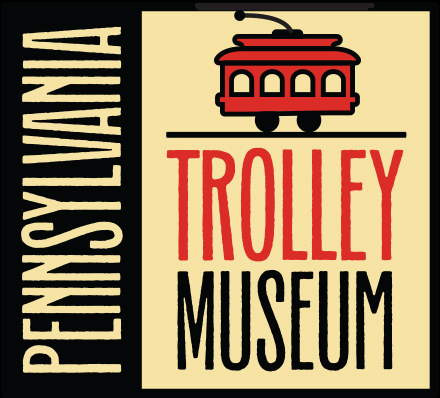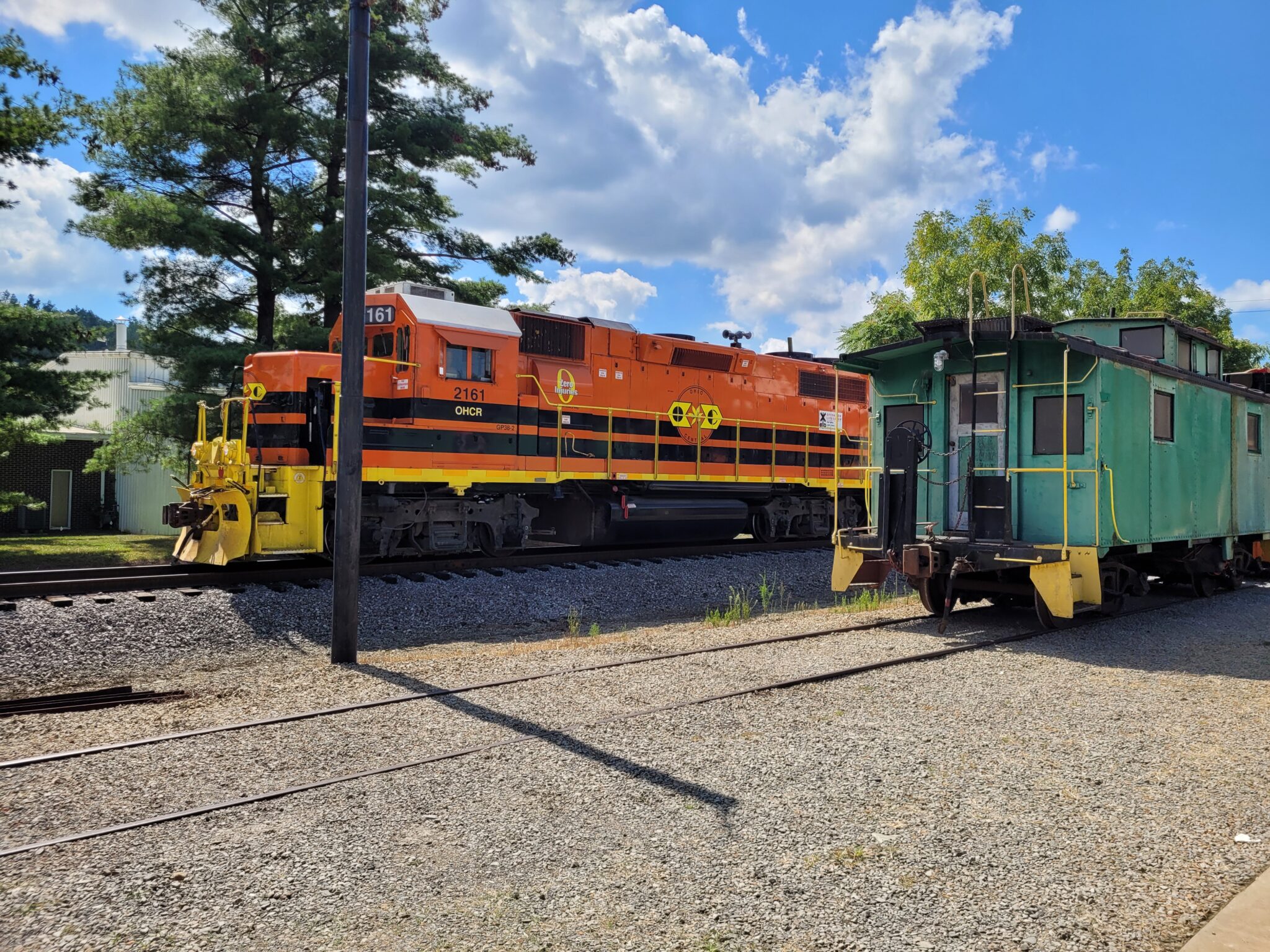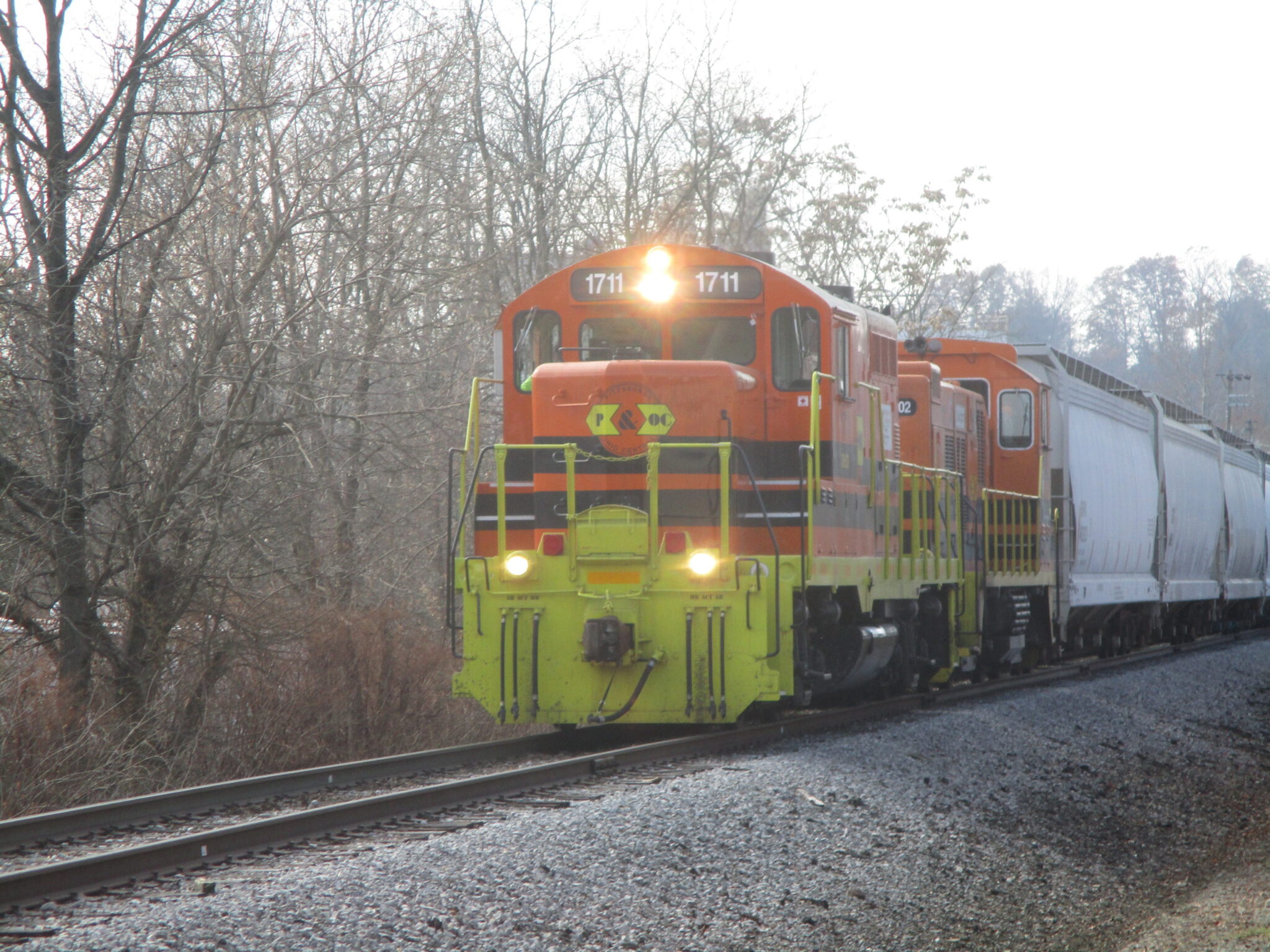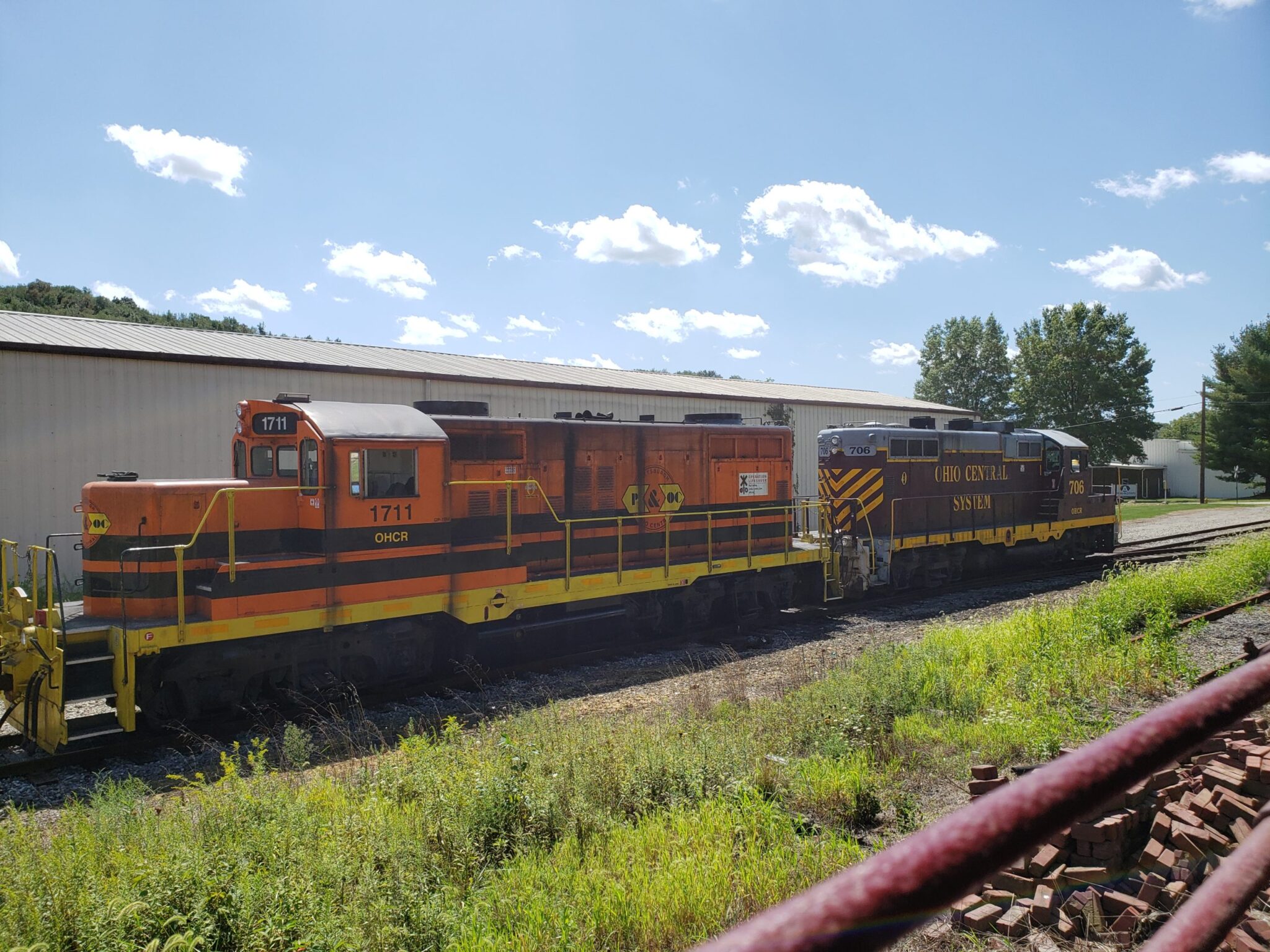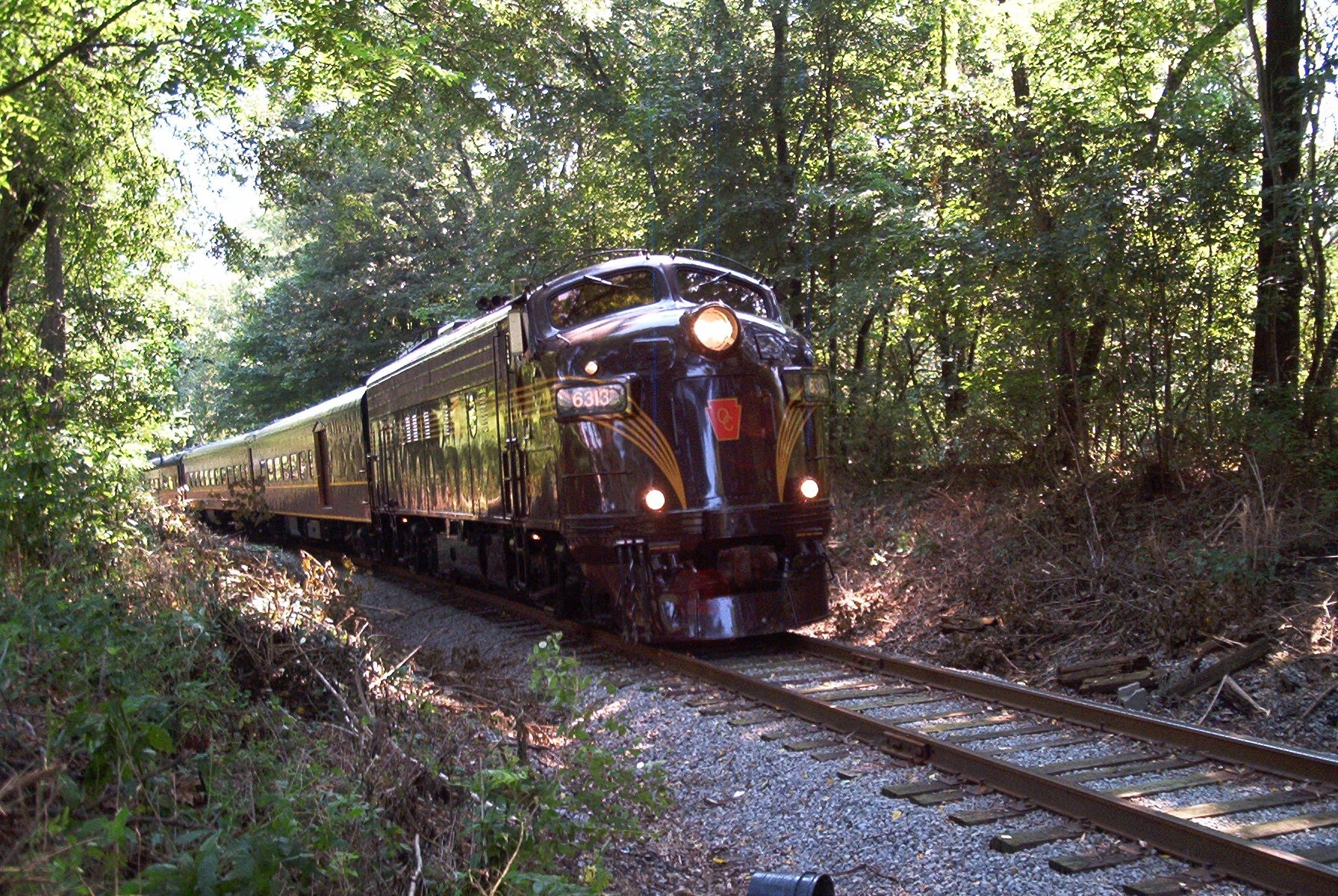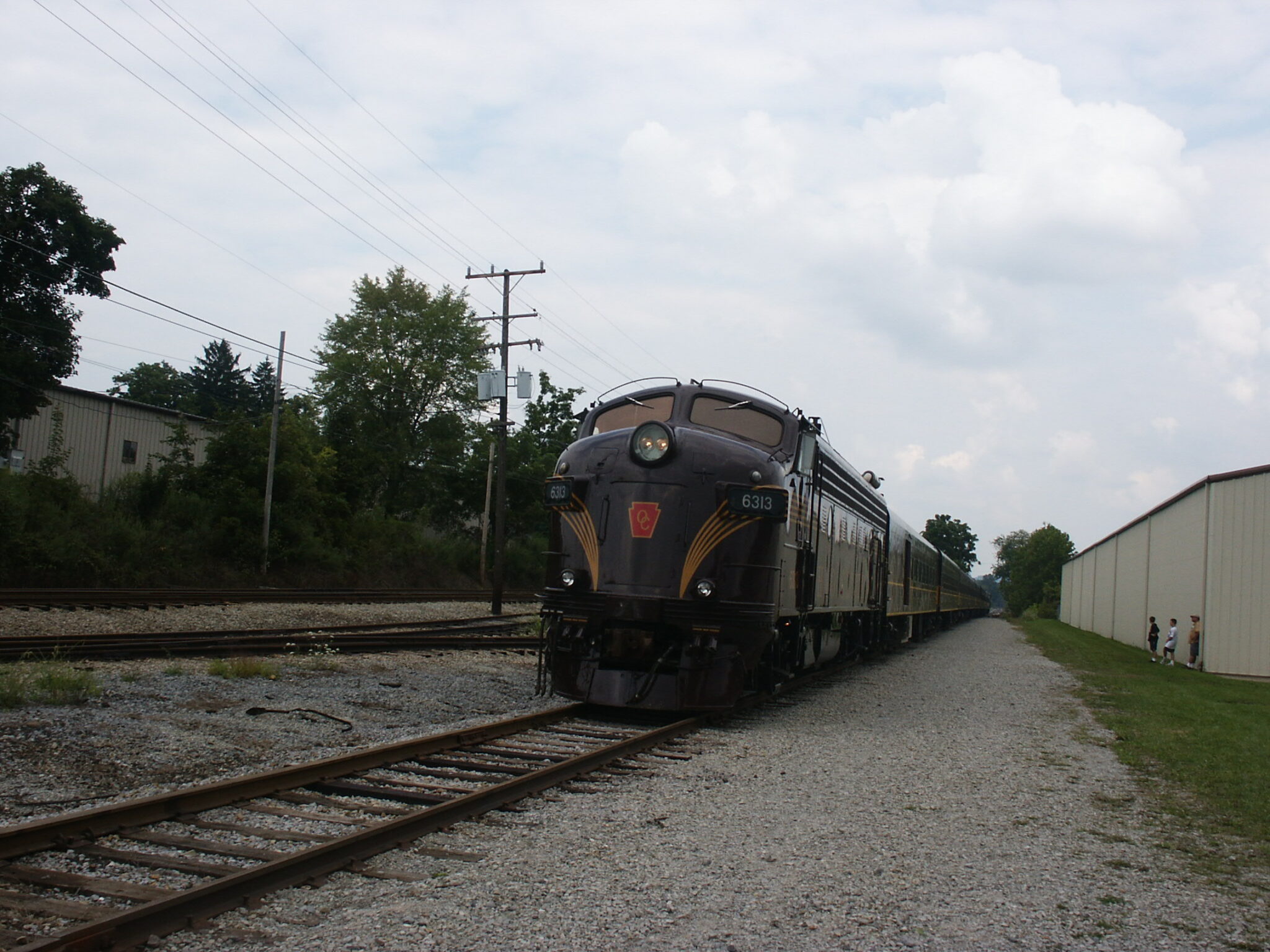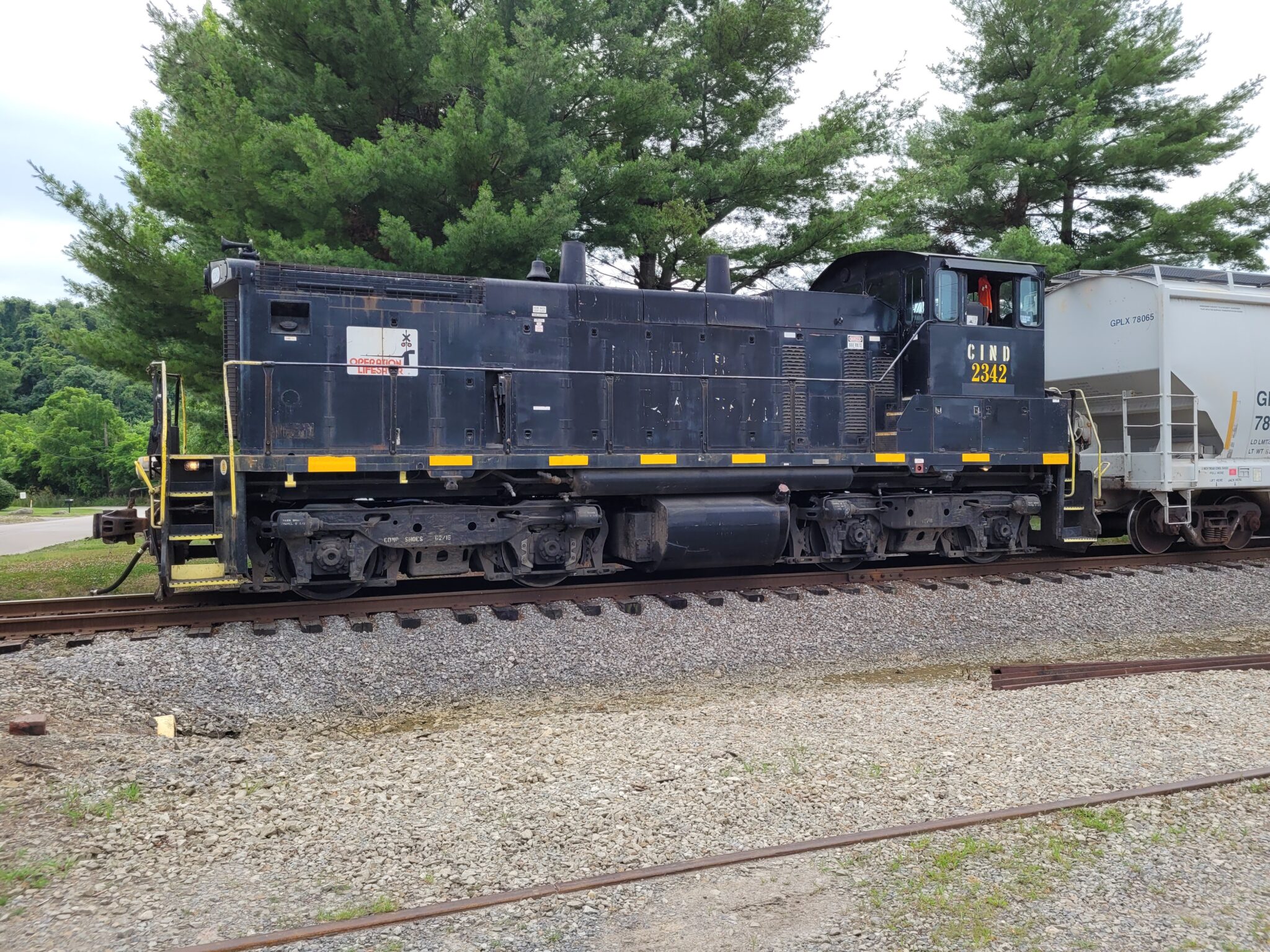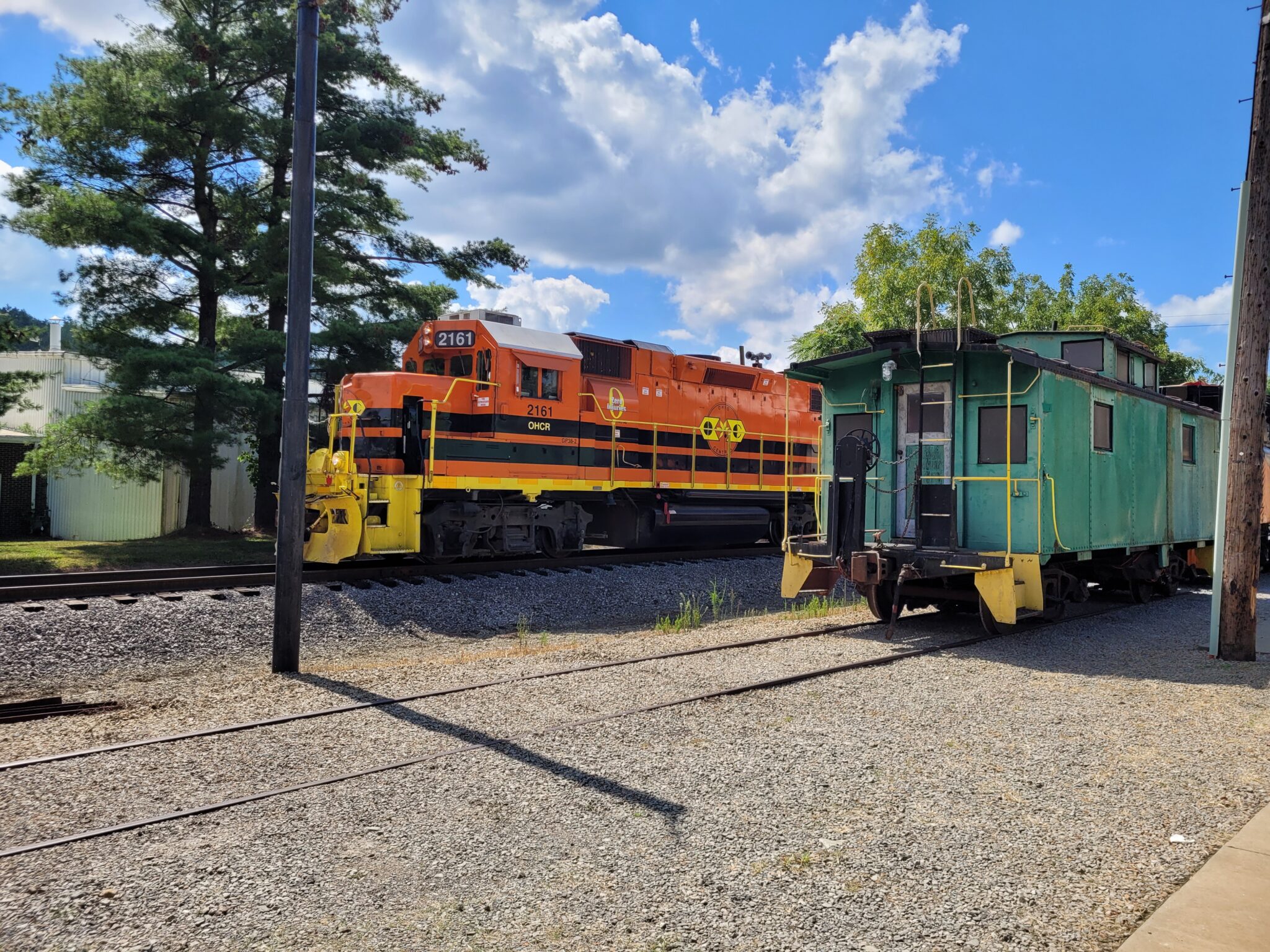Historical information written by William Metzger
Visitors to the Pennsylvania Trolley Museum may notice another set of tracks running alongside the trolley tracks during their ride towards the Trolley Display Building. Some eagle-eyed riders might even realize that the tracks are not as far apart as the trolley tracks. In fact, the tracks next to the museum’s are standard gauge — 4 feet 8.5 inches apart, not broad gauge, or 5 feet 2.5 inches apart, like the museum’s. This is the standard distance between the rails for passenger and freight railroads around the country, and since most of our trolleys have wheels built for “Pennsylvania Broad Gauge” tracks, they wouldn’t be able to travel on these railroad tracks. On some days of the week, guests might even get to “race” alongside a freight train during their ride — this line is currently owned by the Genesee and Wyoming Railroad (operated as the Pittsburgh & Ohio Central Railroad) and still moves freight for customers in Washington County over 150 years after it was built.
A number of businessmen in Washington, PA caught the railroad fever in the late 1820s. It was natural; the National Road from Baltimore passed through Washington and word of the Baltimore and Ohio (B&O) Railroad’s audacious plan to build a railroad to the Ohio River rapidly traveled west. But while some Washingtonians were excited about the prospects of a railroad, the blacksmiths, wheelwrights, and innkeepers who made their living from the Road were somewhat less enthused. In fact, they were downright hostile to the idea.
A survey was made down the Chartiers Creek to Pittsburgh in 1831, but nothing came of it due to a lack of financial support. Another serious attempt at building the railroad came in 1853 when the Chartiers Valley Railroad was incorporated and construction commenced.
By this time, both the Pennsylvania Railroad (PRR) and the B&O had reached the Ohio River and traffic on the National Road was dropping dramatically. Fifteen miles of line were graded in 1856 but again, sagging finances caused construction to stop.
In 1866, the PRR purchased the line and finished construction from Washington to Mansfield, PA (now Carnegie) in 1871, 40 years after the initial survey. The new railroad was 23 miles long, crossed Chartiers Creek 19 times and included 2 tunnels.
Traffic boomed on the new line with passenger service between Washington and Pittsburgh, agricultural products from the many farms in the area, and coal traffic from the new mines that opened with the coming of the railroad.
The first tunnel at Glenn in what’s now Scott Township where the railroad crosses under Route 50, was daylighted (made into an open cut) in 1898. The other tunnel, known as Bell’s Tunnel, or Greer Tunnel, is still in use; it was widened for a second track and lined with brick in 1895. The railroad was double tracked from Carnegie to Houston, 15 miles, by 1904.
Branches were built from Bridgeville to Cecil and Bishop in 1890, to Westland and Palanka in 1904 and to Manifold also in 1904, all to tap new mines working the Pittsburgh Coal Seam.
The Chartiers Branch also connected with the Pittsburgh, Chartiers and Youghiogheny at Glenn and Woodville Junction, the Montour Railroad at Hills and the B&O (through the jointly-owned Tylerdale Connecting) and the narrow gauge Waynesburg and Washington Railroad at Washington.
In 1926, nine daily passenger trains made the round trip between Pittsburgh and Washington. Typical running time was an hour and a half to cover the 32 miles, but express trains could do it in an hour.
Traffic boomed in World War II with manufactured goods originating in Washington and Canonsburg and coal pouring out of the big mines on the line, but, like most railroads in the region, the postwar era brought the inevitable decline as plants and mines closed or went to truck transport.
The line was single tracked by 1951 and the last scheduled passenger train ran in July 1952, one year before the interurban line between Pittsburgh and Washington, PA along which the Museum lies was abandoned. At this time, the trains were still steam-powered, and popular legend was that the trolleys used to race the trains on the straightaway where the Museum’s track is today.
The Pennsylvania Railroad became Penn Central which became Conrail. In 1982, Conrail abandoned 1.8 miles of the line from Tylerdale to Washington, then abandoned 1.4 miles from Tylerdale to near Arden in 1984. All the branch lines, except for a portion of the Bridgeville and McDonald Branch which was abandoned in the mid-1980s, were abandoned by 1972.
In 1996, Conrail sold the line with others in the area to Railtex Corporation, who renamed it the Pittsburgh Industrial Railroad. In 2001, the lines were purchased by the Ohio Central Railroad System, who named them the Pittsburgh & Ohio Central Railroad. The P&OC and the OCR System was then purchased in 2008 by the current owner, the Genesee & Wyoming Inc.
It is still operated as the Pittsburgh & Ohio Central. According to the Genesee & Wyoming website, the top commodities hauled on the 38 miles of railroad include chemicals and plastics, metals, minerals and stone, and petroleum products.
Remarkably, six stations still stand on this line as of 2023: in Bridgeville, Silhol Lumber Company’s warehouse is built around the old freight station and the Bridgeville Area Historical Society (formerly a library) is the old passenger station. The old Boyce station still exists in Upper Saint Clair, as does the Canonsburg passenger station. In Washington, on the abandoned portion of the line, both the freight and passenger stations survive.
Through the mid 2000s, the Pittsburgh & Ohio Central ran several trips from Carnegie, PA to the Pennsylvania Trolley Museum and back with two F-unit locomotives and air-conditioned coaches. The engines and cars were acquired from Canadian National but were painted to look similar to Pennsylvania Railroad colors. PTM volunteers served as car hosts on the Chartiers Valley Flyer, helping passengers off at a platform built by the P&OC alongside the Accutrex parking lot. Riders would take a trolley ride to the Washington County Fairgrounds where they would eat a meal before heading back to Carnegie. It took 13 trolley trips to get everyone over to the Fairgrounds and back since there were up to 600 people on the train!
Last updated September 2023
